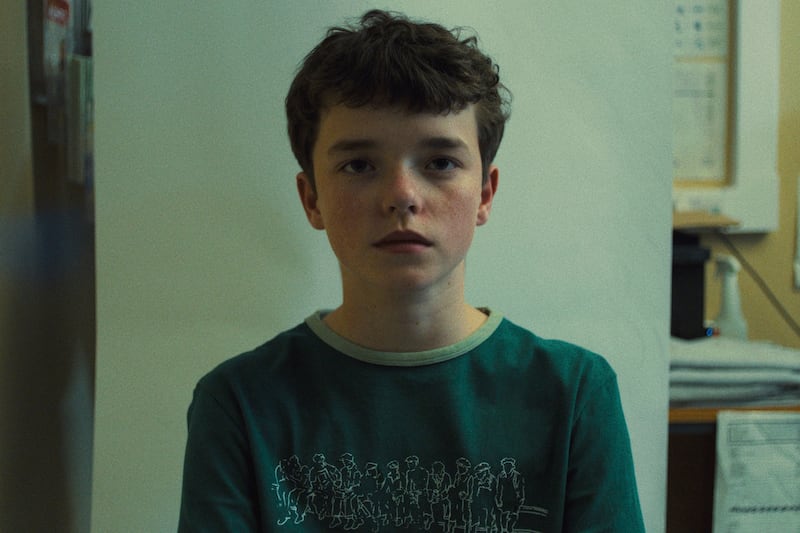
Ten years ago Colum McCann edited an anthology, How to Be a Man, in which each contributor explored that phrase in a short story. It might have served as an alternate title to Elaine Feeney’s second novel as the concept plays heavily on the mind of its central character, 13-year-old Jamie O’Neill.
Living with his father Eoin – his mother died in childbirth – he resides somewhere on the spectrum and has a particular obsession with numbers, the colour red, and the possibility of inventing a Perpetual Motion Machine. We meet him as he enters secondary school filled with anxiety about the changes that will take place in his life. Thirteen-year-old boys not being noted for their sensitivity, it’s inevitable that his idiosyncrasies will make him a target for his new classmates.
Novels such as Mark Haddon’s The Curious Incident of the Dog in the Night-time and Siobhán Dowd’s The London Eye Mystery treat the subject of teenagers afflicted by neurodevelopmental conditions with warmth and empathy, allowing the reader to identify with the child while never making him the subject of ridicule. Feeney follows in this tradition but makes the gutsy decision to present him as rather more brittle than the children in those books. If that means we are kept at a slight remove from him and find him less warm and fuzzy than his literary antecedents, then perhaps that’s a mark of authenticity rather than insensitivity.
Running parallel to Jamie’s story is that of Tess Mahon, a teacher preparing to undergo a final course of IVF treatment. In a dramatic scene she finds herself unable to face another disappointment and makes an unexpected decision that has profound consequences for both her life and her marriage.
Irish Tesla owners on Musk’s EV company: ‘I’m either stuck with it, or I have to take a big financial hit’
‘Our daughter is almost 40 and moving out soon, but she has told her son that he can stay with us’
‘I grew up in an apartment in another country. I bought an apartment in Dublin and had to get out after a year’
Adolescence: Five truths about our teenage boys we need to address urgently
Motherhood is central to the novel. Jamie is a boy without a mother; Tess is a woman who can’t become one. Through this they form a friendship, each providing the other with something that’s missing from their lives while pulling away from the people who love them the most. In Jamie’s case, his devoted, if distracted, father; in Tess’s, her kind, if dull, husband.
A writer treads a fine line when creating dialogue for a child with learning difficulties and, while Feeney generally avoids cliche, Jamie makes the occasional remark that seems unlikely to come from a boy of his age, even one with his condition, and that risks losing the reader. “My life is the plot of a bad book,” he remarks, a risky sentiment for any novelist to express. “I am not interested in friendships of my peers, I find them boring at best and anxiety-inducing.” “The curragh now looks like Gulliver flat down on the sand, and that makes us Lilliputians.”
Balancing these, however, is the surrounding prose that offers nuggets of wisdom, such as when Tess describes the college she works in as being “everything she despised about education; closest to the church, farthest from God”.
If motherhood, or the absence of it, is on display throughout, fatherhood plays a central part too. Paul, Tess’s husband, would clearly play that role well if the opportunity was given to him. Eoin, who took on single parenthood at a young age, has risen to the challenge impressively. A subplot, involving Tess’s father begging on local streets, stretches credibility and might have been better jettisoned, but another, featuring a different type of father – the school principal, Faulks – is interesting. In Faulks Feeney has taken the archetype of the misogynist, sexually deviant figure of authority in a clerical collar and somehow invested it with tremendous originality and resonance. As with the best villains, his every appearance livens things up considerably and one longs for his downfall.
Second novels are notoriously difficult affairs. It takes many years to acquire the skill to produce a debut and, from the third book onwards, confidence allows the writer to take more risks. For that reason, with a few honourable exceptions, second novels often become showcases for a writer’s gifts while disappointing a little on the level of story engagement. How to Build a Boat is a good example of this. It is filled with interesting characters but is occasionally undermined by a narrative that feels a little flimsy and prose that suffers from a lack of boldness. However, there’s enough to admire to make one look forward to Feeney’s next book.
John Boyne’s latest novel is All the Broken Places (Penguin)














